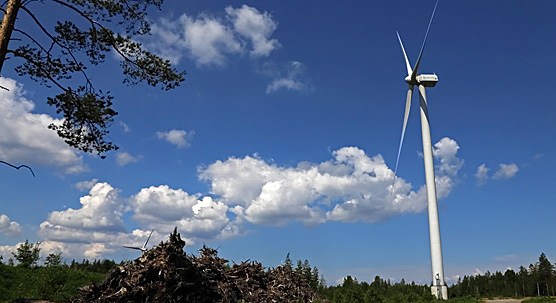
© Olli-Pekka Pietiläinen
A record-breaking number of new municipalities have joined the Hinku network this year. At the moment, there are 55 Hinku municipalities in Finland, with a total of over 1.3 million residents, which is over 20% of all Finns.
By the end of June 2019, 11 new municipalities have joined the Hinku network of municipalities aiming at carbon neutrality: Ylöjärvi, Nokia, Pirkkala, Kouvola, Parkano, Tampere, Kotka, Orivesi, Kangasala, Harjavalta, and Imatra. This is already more than the previous record years of 2013 and 2014, when a total of nine municipalities joined during the entire year in both years.
The Hinku network started with small municipalities, but even large cities are now joining, such as Tampere, Kouvola, and Lahti, which will seal its decision in the Council meeting in September.
The Hinku municipalities receive peer support and good examples for climate work from the other participating municipalities. Examples are sought particularly from municipalities in the same size range which are struggling with similar challenges.
Power for climate work from sub-regional units
Municipalities cooperate closely within sub-regional units or regions, and it is considered natural for neighbouring municipalities to join the network together. The Tampere City Region, for example, joined Hinku as a sub-regional unit in the beginning of the year. Thereby the sub-regional unit is strengthening its commitment to strict carbon neutrality targets.
As the central city of the region, Tampere joined the network by decision of its City Board in April. Of the other municipalities in the city region, Lempäälä, Nokia, Pirkkala, Vesilahti, and Ylöjärvi were already members of the network. Kangasala and Orivesi joined immediately after Tampere. Of the municipalities in southern Pirkanmaa, Valkeakoski, Akaa, Urjala, and Pälkäne have stated their intention to join the network, following the example set by the rest of the region.
In order to reach the climate goals, the municipalities of the Tampere region aim to make their urban structure denser, diversify the use of land areas and create the preconditions for environmentally responsible business activities through land use planning. Furthermore, energy production and consumption will be steered towards renewable energy sources and the energy efficiency guidance of regional construction will be developed.
Climate questions carry increasing weight in the decisions of municipalities
The strong climate goals of the European Union and Finland’s current Government Programme have also encouraged municipalities to strengthen their own goals. According to professor Jyri Seppälä, Director of the Carbon Neutral Municipalities Project, the increasing weight of climate change in political discussions has also encouraged municipal decision-makers unsure about the topic to aim for ambitious emission reductions.
The members of the Hinku network are committed to reducing their emissions by 80% from the 2007 level by 2030. The remaining 20% will be sequestered in carbon sinks and compensated for. Municipalities aim to reduce their climate emissions by discontinuing the use of fossil fuels, increasing the production of renewable energy, and improving energy efficiency. Municipalities also support and encourage local businesses and residents to participate in the mitigation of climate change.
The reduction of emissions in Hinku municipalities from 2007 to 2016 has been an average of 26%, which is a few per cent more than the average in Finnish municipalities. There is significant variation in the reduction of emissions between Hinku municipalities. Of the Hinku municipalities, Ii (-52%), Rauma (-39%), Kitee (-35%), Pori (-32%), and Rautjärvi (-32%) have achieved the highest reduction of emissions. In 2016, the emissions in Hinku municipalities increased slightly, but less than in non-participating municipalities.
Further articles on the topic